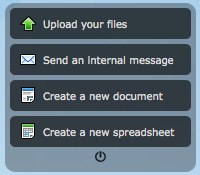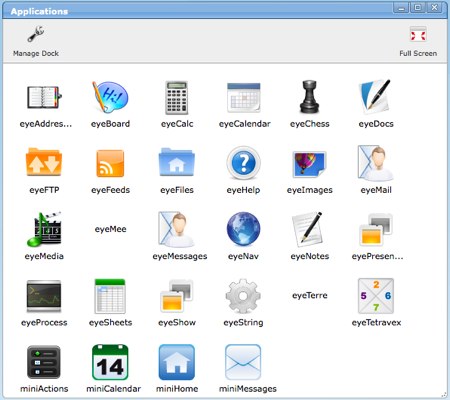3PAR社はCloud Computing事業者に対してCloud Storageサービスを提供するための基盤ソフト、3PAR Utility−Storageをライセンスするベンダー。 IDCによると、Storage Cloud事業は大きな伸びが予測されている。
3PARの技術は、Attenda、Terremark、Verizon Business、Datapipe社等、大手のCloud Storageサービスを提供するベンダーも採用している。
3PAR, the leading global provider of utility storage, announced today the 3PAR Cloud-Agile program, a new partnership initiative to promote the adoption of cloud computing and cloud-based services offered by leading providers with infrastructures powered by 3PAR Utility Storage. The 3PAR Cloud-Agile program gives partners the opportunity to promote differentiated virtual private array (VPA) and disaster recovery (DR) offerings under the respective names 3PAR Cloud-Agile: SECURED and 3PAR Cloud-Agile: ASSURED.
3PAR created the Cloud-Agile program in response to an increase in demand for enterprise IT delivered as a utility service and a corresponding uptake in 3PAR Utility Storage adoption among leading IT hosting providers. Seven of the world's top 10 revenue-generating managed service providers as identified by the "Winter 2009 Managed Hosting Report" issued by Tier1 Research use 3PAR Utility Storage as the storage foundation for their cloud-based service offerings.
According to analyst firm IDC, worldwide IT cloud services spending is projected to grow by a factor of three -- from $16.2 billion in 2008 to $42.3 billion in 2012 -- as enterprise IT shifts away from the use of dedicated infrastructures toward a shared, virtualized utility service model. Within this market, storage-related cloud services are predicted to account for 5 percent of 2008 spending -- a figure projected to grow to 13 percent of overall IT cloud services spending by 2012 -- representing anticipated growth of nearly sevenfold (Source: IDC eXchange, "IT Cloud Services Forecast - 2008, 2012: A Key Driver of New Growth," blogs.idc.com/ie/?p=224, Oct 2008).
"We see that interest in cloud computing services has risen as capital budgets have come under pressure and companies have looked to move enterprise IT costs to a variable basis that aligns more closely with actual business performance," said Benjamin S. Woo, IDC Vice President, Enterprise Storage Systems. "Enterprises are definitely realizing that augmenting core IT infrastructure with cloud services can provide a competitive advantage. Given 3PAR's focus and success with service providers, this corresponds well with the introduction of 3PAR's Cloud-Agile program."
The Cloud-Agile program is designed to raise awareness for the cost and agility benefits of cloud computing services and encourage the development of a mutually beneficial, robust cloud computing ecosystem. Program participation is limited to leading hosting providers using 3PAR Utility Storage as a strategic element of their cloud-based service offerings.
"As a charter member of the Cloud-Agile program and an early 3PAR customer, we are able to add enterprise-class utility storage capabilities quickly and efficiently to our cloud-based offering, Computing as a Service," said Michael Marcellin, Vice President of Verizon Business Global Managed Solutions. "This agility is particularly important for Verizon Business since it enables us to more flexibly serve our enterprise customers as they seek alternatives to traditional IT models."
3PAR Cloud-Agile program participants such as Attenda, DataPipe, Terremark, and Verizon Business say their utility storage infrastructures -- built on 3PAR InServ® Storage Servers -- have enabled them to distinguish themselves with an agility that is lacking from others in their market. These companies share a significant investment in 3PAR Utility Storage, which has provided a strategic advantage by enabling them to handle unpredictable growth, control costs, accelerate book-to-bill cycles, assure service levels, and efficiently deliver value-added services. For these companies, service request response times have been reduced to minutes versus days, weeks, or even months with 3PAR.
"3PAR Utility Storage has been a foundational technology for Terremark," said Jason Lochhead, CTO Hosting Services at Terremark. "The agility and cost-efficiency that 3PAR Utility Storage has given our infrastructure has been strategic to our service offerings. As a charter member of the Cloud-Agile program we look forward to working closely with 3PAR to further promote and enhance our portfolio of value-added cloud and managed storage services to better meet the changing needs of our customers."
For 3PAR Cloud-Agile partners, 3PAR Utility Storage has also contributed to savings on facilities and infrastructure costs while significantly reducing storage administration time. This has meant improved time-to-revenue, lower storage total cost of ownership (TCO), and tighter alignment between costs and revenues. For example, in a survey of 3PAR's cloud computing service provider customers, 69% of IT organizations estimated that, by using 3PAR Utility Storage to power their cloud computing services, they have saved 40% or more in total capacity as compared to traditional storage alternatives (Source: TechValidate).
"We chose 3PAR for its industry-leading flexibility and agility," said Simon Hansford, VP of Products and Marketing at Attenda. "The decision to invest in the 3PAR platform has cut our capacity and array purchase requirements by at least 60% as compared to other systems."
"Our clients want the benefits of cloud computing but they don't want the risk associated with unproven technologies," said Mark Cravotta, Vice President for Worldwide Sales at DataPipe. "3PAR Utility Storage delivers the agility necessary for rapid implementation of secure and standards-compliant solutions. 3PAR Utility Storage is particularly strategic for our business as it allows our clients to reduce storage CAPEX and enables DataPipe to deliver fully managed, highly efficient storage with superior performance."
Under the terms of the program, participants receive expert technical training to enhance the quality of the cloud-based services that these providers are able to offer to end users. The program also offers a combination of lead sharing, sales training, and joint marketing to increase selling opportunities and grow awareness of the benefits of cloud computing. In addition, under the program, participating providers have the opportunity to offer enhanced services built on 3PAR Utility Storage under the names 3PAR Cloud-Agile: SECURED and 3PAR Cloud-Agile: ASSURED.













 In the past year, I've had hundreds of conversations with client and press about the emerging cloud services model, and its impact on the IT industry. As you might imagine, more than a few folks question whether the cloud services model will really be as pervasive and transforming as its proponents argue. The skeptics point, legitimately, to the many remaining
In the past year, I've had hundreds of conversations with client and press about the emerging cloud services model, and its impact on the IT industry. As you might imagine, more than a few folks question whether the cloud services model will really be as pervasive and transforming as its proponents argue. The skeptics point, legitimately, to the many remaining  Everyone knows that one of the top
Everyone knows that one of the top 


